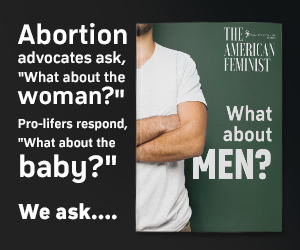There is a growing politicization in abortion reporting among U.S. states, research from over the last several years shows. A direct correlation between states’ legislative abortion policy and the quality of their abortion reporting points to the increase, a report from the Charlotte-Lozier Institute (CLI) says, and is a “major shift” from the last abortion reporting study performed by the pro-life research group. CLI is the research arm of national pro-life group Susan B. Anthony Pro-Life America and studies both abortion policy and pregnancy help organizations extensively.
CLI released its report, “The State of Abortion Reporting in 2024 America: Still Striving Toward a Better National Standard,” earlier this summer. One thing that has remained constant since the group’s last report on abortion reporting in 2016 – and remains a major concern as well – is that unlike other public health measurements there is no national mandate for states to collect and report abortion data.
CLI research associate Mia Steupert discovered several trends during the survey, which began in September 2023. The most obvious was what she termed the “partisan nature” of state abortion reporting.
“I was looking at comparing the gestational laws [of states] with the reporting scores, and it was just so stark,” Steupert told Pregnancy Help News.
Please follow LifeNews on Rumble for the latest pro-life videos.
“When it was done in 2016, they weren’t comparing gestational laws with the reporting scores because it wasn’t a partisan issue,” Steupert said.
For example, Minnesota, Michigan, and Kansas were all states that had almost no gestational limits or none at all, she said, and still had really good reporting. When she compiled the data in this time, once the results populated, she noticed the significant shift.
“I was just really surprised at, based on the results, the partisan nature of the reporting,” Steupert said. “It was mainly the partisan change that really stuck out.”
CLI details factors that point to the politicization in the executive summary of the research, including that overall, states with no abortion limits past 15 weeks concurrently had low quality abortion reporting, and that since CLI’s 2016 report, 16 reporting areas enacted more comprehensive reporting standards while six weakened theirs.
“While pro-abortion advocates in the private and public sphere claim that abortion is healthcare, they are doing everything they can to demedicalize it, including advocating for eliminating or loosening abortion reporting requirements in states across the country,” Steupert states in the introduction to the study.
“While other public health metrics are tracked and mandated to be reported to the Centers for Disease Control and Prevention (CDC), abortion reporting in the United States is entirely voluntary at the national level,” she also writes.
Barriers to accurate numbers
Steupert and her colleagues continually assess abortion reports from the states.
“When I looked at those, and I’ve been looking at those for the last year-and-a-half, I’ve noticed a lot of changes at the individual [state] level, and I just thought that it was time to update the main paper,” she said.
She sent out surveys to the states and gave health departments around three months to respond. Some did and some did not. Some used confidentiality as a reason for not returning the questionnaire. Steupert clarified that this was not a feasible reason for not responding.
Privacy concerns “are validated,” Steupert said, but “confidentiality is already in place” in both pro-life and pro-abortion states.
“That’s not something we need to be concerned about when we’re talking about these public-facing reports,” she said.
Because of poor reporting from states like Michigan, which used to have good reporting, she said, a clear picture regarding abortion in the United States cannot be attained. California is another state that doesn’t require abortion reporting.
And now that abortion pills can be mailed anywhere essentially without accountability, tracking accurate abortion numbers in any state, pro-life or pro-abortion, is nearly impossible.
“It’s concerning,” said Steupert. “Of course, there are external events in the country that caused changes in America, but just seeing how partisan it [abortion] has become, is concerning.”
“Who’s to say that other data points that have to do with maternal health won’t become partisan?” she asked.
Additional concerns
CLI’s statement on its study touched on changes in abortion reporting resulting from the Dobbs decision, saying that while the ruling is responsible for preventing elective abortions in many states abortions will become more concentrated in states with little to no limits on gestational age for abortion. Steupert remarked on strategic placement of abortion centers near the border in abortion states opening the door for women to travel to these abortion “hub” states that have no limits on gestational age.
“You have all these states across the country that are central to or border pro-life states, so all those women in those pro-life states are going to go to those pro-abortion states,” she said. “The pro-abortion industry is very strategic in setting up new clinics on borders of states that are pro-life.”
Further, chemical abortion, which, again, has come to account for a majority of abortions in the U.S. and because it’s largely being distributed via mail, affects abortion stats across state lines in an under the radar fashion.
“Abortion pills are being sent into pro-life states,” she said. “Which means abortions are being performed in pro-life states,” skewing data for places like Oklahoma which recently reported zero abortions.
“They don’t know if any abortions happen under the exceptions or if any are mail-order abortions,” Steupert said. “With the abortion pills being sent by mail, we don’t know the true numbers.”
“That’s the real trouble of tracking that type of abortion, and we know that type of abortion is really dangerous because there’s no follow-up, no pre-screening, no reports of complications,” she said. “It’s almost impossible to connect the dots.”
Other critical elements surrounding abortion were left out of reporting as well – including the number of babies born alive after an abortion, abortion-related deaths, the number of late-term abortions, as well as the total number of abortions performed. Such critical information would be considered standard for inclusion in other public health reports.
“Why don’t we have these tools for abortion?” Steupert asked.
Accuracy needed for public health data
CLI researchers use data from other organizations in their research, including the CDC, which lags two years for numbers. The varying timeline for that federal organization and other reports causes frustration and underscores the need for a central standard for abortion reporting.
“Because abortion is federal in nature, there should be a central repository of public abortion data, and there is not,” Steupert said.
“Looking at it from a non-partisan nature, there’s no reason why this data shouldn’t be available,” she said. “It’s not implicating anyone’s privacy and it’s not even talking about the moral side of this issue. It’s just talking about the public health value.”
Relevance of CLI report for pregnancy help
For pregnancy help organizations, several elements of Steupert’s report can be helpful, such as the demographics she gleaned.
“Pregnancy centers are all about serving women,” she said. “They want to know which demographics to reach out to, where abortion rates are the highest – some states even report abortion by county, so that would allow them to have a better idea of what the community they’re in is facing, what the rates are, whether the women in their community are most impacted by chemical or surgical abortion.”
“Abortion data is reported as public health data, and that’s what pregnancy centers do – they serve not only the individual, but they’re trying to uphold good public health as well,” said Steupert,
Not all unwelcome news
Despite the concerning trends with abortion reporting not all hope is lost, Steupert told Pregnancy Help News.
“Many states have improved their reporting, including Nevada, Massachusetts, Kentucky and Wyoming – they’ve all made really good improvements,” she said. “For the pregnancy centers in those states, which will be critical information for them as they go forward.”
Steupert said she can see updating this CLI paper in a few years because of the pro-life laws going into effect and how that will change future data.
LifeNews Note: Gayle Irwin writes for PregnancyHelpNews, where this originally appeared.








